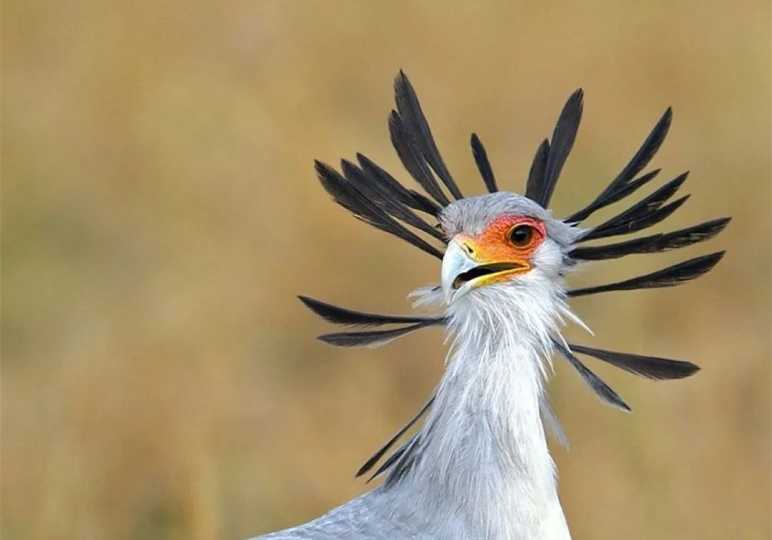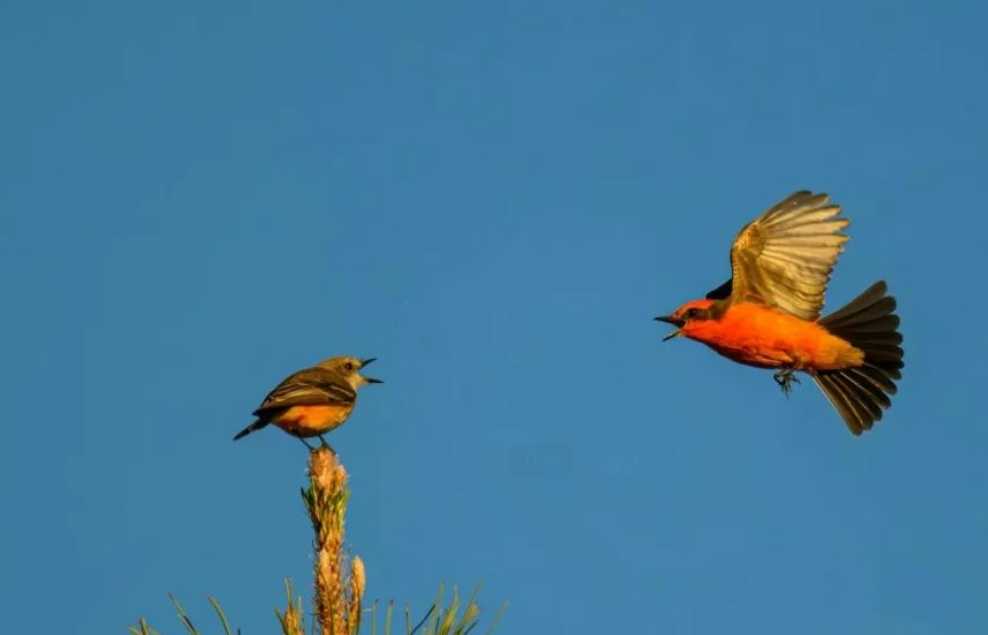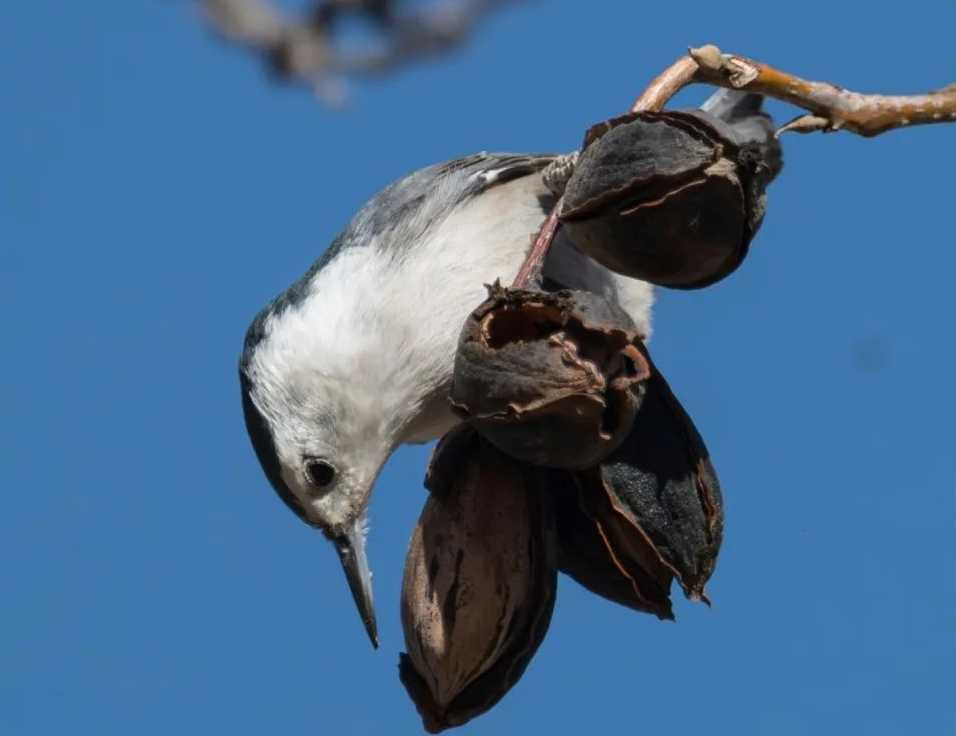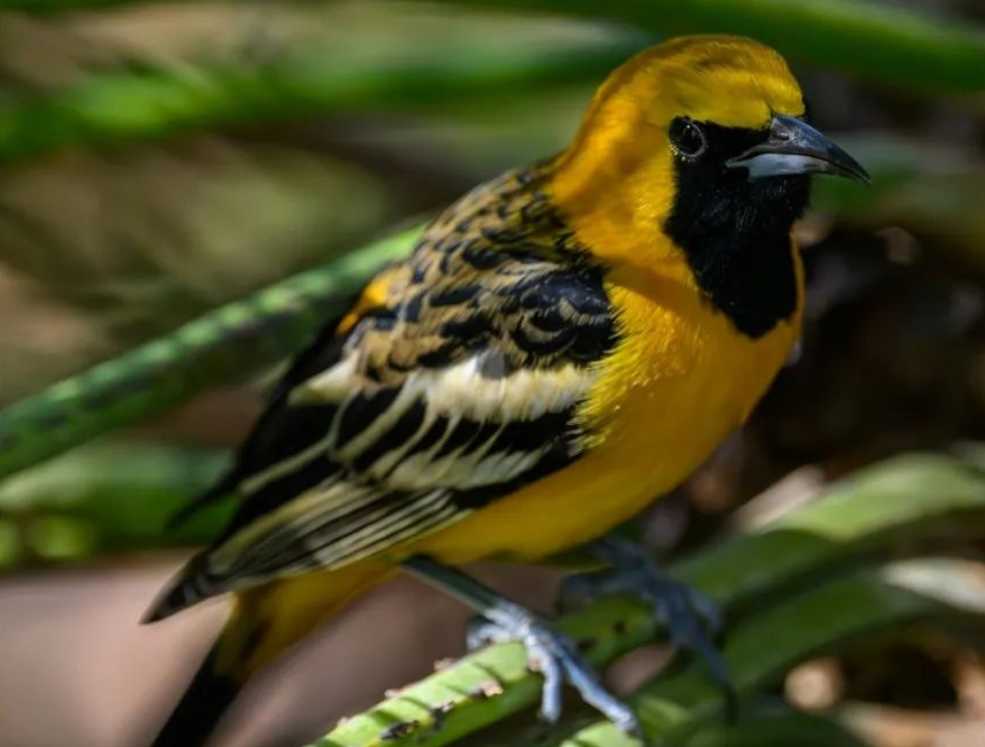Scientifically named Sagittarius serpentarius, this iconic raptor of sub-Saharan Africa belongs to the family Sagittariidae, standing 1.2–1.5 meters tall with a 2.1-meter wingspan. Renowned for its long legs and terrestrial lifestyle, it earns the nickname "African marching eagle," covering 20–30 kilometers daily on foot. Its name stems from the 20 black crest feathers on its head, resembling the quill pens once tucked behind secretaries’ ears—feathers that erect into a dramatic fan when the bird is agitated, framed by vivid orange-red bare skin around the eyes.
The Secretarybird: Africa’s Majestic Serpent-Hunter and Walking Raptor
Scientifically named Sagittarius serpentarius, this iconic raptor of sub-Saharan Africa belongs to the family Sagittariidae, standing 1.2–1.5 meters tall with a 2.1-meter wingspan. Renowned for its long legs and terrestrial lifestyle, it earns the nickname "African marching eagle," covering 20–30 kilometers daily on foot. Its name stems from the 20 black crest feathers on its head, resembling the quill pens once tucked behind secretaries’ ears—feathers that erect into a dramatic fan when the bird is agitated, framed by vivid orange-red bare skin around the eyes.

Source: Images from the Internet, if there is any infringement, please contact the removal of
"The secretarybird’s appearance defies raptor stereotypes," notes ornithologist Dr. Amara Okafor. "Where others soar, it strides across savannas, its long legs adapted for stomping snakes. Those crest feathers aren’t just ornamental; they signal mood, transforming the bird from elegant to imposing in an instant." Its gray plumage, accented by white wing patches and black thigh feathers, contrasts with a hooked yellow bill—evolution’s perfect tool for dispatching venomous prey.
Native to grasslands and open woodlands, the secretarybird hunts by trampling vegetation to flush out snakes, lizards, and small mammals. "Watching it dance on prey is a marvel," says wildlife biologist James Mwangi. "Each stomp is precise, like a martial artist delivering calculated blows." This unique hunting strategy has inspired African folklore, where the bird is seen as a symbol of wisdom and protection.
Conservationists have noted declines due to habitat loss and pesticide use, though protected areas in Kenya and South Africa support healthy populations. For safari-goers, spotting a secretarybird striding across the plains is a rare privilege: "Its silhouette against the horizon is unforgettable—long legs, crest flared, as if nature painted a walking exclamation mark on the savanna," describes photographer Marcus Westberg.
In avian biology, the secretarybird stands alone: the only raptor adapted for long-distance walking. "Its anatomy is a study in evolutionary compromise," adds Okafor. "Those legs enable marathon treks but limit aerial agility, yet the trade-off works—few predators can match its snake-hunting prowess." As both a biological oddity and a cultural icon, the secretarybird embodies Africa’s wild spirit: "It’s not just a bird; it’s a living legend, a creature so extraordinary it seems to bridge the gap between reality and myth," says Mwangi. "In the vast African landscape, the secretarybird marches on—part hunter, part poet, and entirely nature’s masterpiece."





